Average Age of U.S. Light Vehicles Older Than Ever

S&P Global Mobility has reported that the average U.S. automobile is now 12.2 years old, which it said represented a 2 percent increase since 2021. While relatively modest, the general trend for the last five years has been for vehicles to get older as drivers attempted to milk more life from beleaguered hardware.
Much of this has been attributed to North America’s broadening wealth gap and general improvements in vehicle longevity. If you look back at Department of Transportation data from the 1990s, the average age of a car was under nine years. By 2007, the typical car would see its 10th birthday before scrappage and the number has continued to climb from there. Much of that is due to households having to make do with tighter budgets, which was arguably made easier by modern powertrains that can easily exceed 100,000 miles before needing any serious maintenance.
The only real difference from previous decades is that there’s usually a period where the average light vehicle age stays put for a handful of Christmases before pitching up again, whereas the last five have showcased consistent, year-over-year increases. S&P Global attributed the matter to the planetary microchip shortage and ongoing supply chain issues that have created a deficit of new product. In practical terms, that means fewer new vehicles for people to buy and elevated prices on both the new and used markets.
Though it probably should be said that S&P Global’s entire existence is dedicated to financial research and the framing of the resulting data. Known as McGraw Hill prior to 2016, the business has spent the last hundred years shifting from the publishing of textbooks to the purchasing research groups, financial service institutions, broadcasting firms, and more. Since 2005, it’s taken ownership of J.D. Power (which it later sold), 451 Research, IHS Markit, and The Climate Service Inc.
The above information certainly doesn’t change the age of your average automobile. But it may help explain why S&P Global is focused almost exclusively on supply problems when there are numerous financial factors contributing to the issue.
“People do value their vehicles; people do still feel the need to have a vehicle available to them, maybe even more coming out of the pandemic, so that’s caused the vehicle fleet just to grow a little bit,” Todd Campau, automotive aftermarket practice lead for S&P Global, told Automotive News. “And because the new-vehicle sales haven’t been available, it’s been growing from within really from vehicles that have been on the road, and they’re just staying available longer.”
From AN:
The research shows the average age of vehicles has been increasing since 2011, highlighting a trend in popularity of older and higher-mileage vehicles. Data from a Cox Automotive analysis shows that the sale of high-mileage vehicles grew 7 percent in the first quarter of 2022. Previously, vehicles with over 150,000 miles were often deemed unqualified for retail sale and were instead sent to auction to be purchased by independent dealers.
The U.S. vehicle fleet — which includes all light cars and trucks — increased by 3.5 million vehicles to a total of 283 million in 2022, according to S&P Global.
The statement said a continued decline in vehicle scrappage and a flux in demand for used vehicles have contributed to the increase in vehicle age. Vehicle miles also returned to pre-pandemic levels, according to the study, “increasing by more than 10 percent in 2021 as lockdowns eased and people returned to work and leisure travel,” with each light vehicle averaging 12,300 miles in 2021.
That certainly hits close to home. Your author recently took possession of a two-decade-old Toyota Corolla in truly rough shape because the price was right and I wanted to minimize the burden placed upon my other vehicles. But this only happened due to the current state of the market. Had MSRPs and availability remained normal, I’d never have held off on purchasing a new model. Instead, I am now attempting to wait out the market while the cost of literally everything else goes up in the hopes I’m not the first to flinch. Though I would wager this situation (and worse) have become increasingly normal scenarios for average Americans.
So cars are absolutely getting older — with one exception. According to S&P Global, electric vehicles actually saw a decrease in their average lifespan vs last year. Data shows the total number of battery-electric vehicles in operation has increased nearly 40 percent to 1.44 million in 2022, with the average age decreasing to 3.8 years from the previous annum’s 3.9.
“It’s a function of the fact that right now, the share of new EVs being sold each year is such a large share of the overall [EV] population,” Campau concluded.
With fuel prices exploding, EV sales have been on the rise. This matter is further aided by the kind of people buying electrics typically having fatter wallets than their gasoline-dependent counterparts. However, their pace may also endure a few setbacks as energy prices are poised to increase in general. Thus far, most data shows residential electricity prices have increased by between 4 and 11 percent (depending on location) over the last year. But just about every market analysis conducted since the start of 2022 suggests things will worsen throughout the summer. That’s true whether we’re talking about natural gas, gasoline, electricity, or diesel — the latter of which is presumed to see massive shortages going into the fall.
“I think there’s definitely going to be upward pressure on average age through probably 2024, maybe even ’25,” Campau said. “Then I think it will level off once the new-vehicle supply starts to catch up with demand. There’s even a potential, I think, that we could see average age maybe even come down slightly … when that pent-up demand for new vehicles is released.”
[Image: Alex Millauer/Shutterstock]

A staunch consumer advocate tracking industry trends and regulation. Before joining TTAC, Matt spent a decade working for marketing and research firms based in NYC. Clients included several of the world’s largest automakers, global tire brands, and aftermarket part suppliers. Dissatisfied with the corporate world and resentful of having to wear suits everyday, he pivoted to writing about cars. Since then, that man has become an ardent supporter of the right-to-repair movement, been interviewed on the auto industry by national radio broadcasts, driven more rental cars than anyone ever should, participated in amateur rallying events, and received the requisite minimum training as sanctioned by the SCCA. Handy with a wrench, Matt grew up surrounded by Detroit auto workers and managed to get a pizza delivery job before he was legally eligible. He later found himself driving box trucks through Manhattan, guaranteeing future sympathy for actual truckers. He continues to conduct research pertaining to the automotive sector as an independent contractor and has since moved back to his native Michigan, closer to where the cars are born. A contrarian, Matt claims to prefer understeer — stating that front and all-wheel drive vehicles cater best to his driving style.
More by Matt Posky
Latest Car Reviews
Read moreLatest Product Reviews
Read moreRecent Comments
- Turbo Is Black Magic My wife had one of these back in 06, did a ton of work to it… supercharger, full exhaust, full suspension.. it was a blast to drive even though it was still hilariously slow. Great for drive in nights, open the hatch fold the seats flat and just relax.Also this thing is a great example of how far we have come in crash safety even since just 2005… go look at these old crash tests now and I cringe at what a modern electric tank would do to this thing.
- MaintenanceCosts Whenever the topic of the xB comes up…Me: "The style is fun. The combination of the box shape and the aggressive detailing is very JDM."Wife: "Those are ghetto."Me: "They're smaller than a Corolla outside and have the space of a RAV4 inside."Wife: "Those are ghetto."Me: "They're kind of fun to drive with a stick."Wife: "Those are ghetto."It's one of a few cars (including its fellow box, the Ford Flex) on which we will just never see eye to eye.
- Oberkanone The alternative is a more expensive SUV. Yes, it will be missed.
- Ajla I did like this one.
- Zerofoo No, I won't miss this Chevrolet Malibu. It's a completely forgettable car. Who in their right mind would choose this over a V8 powered charger at the rental counter? Even the V6 charger is a far better drive.



















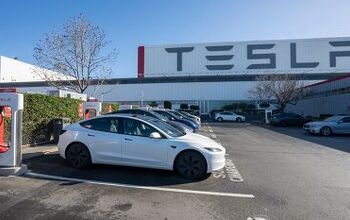


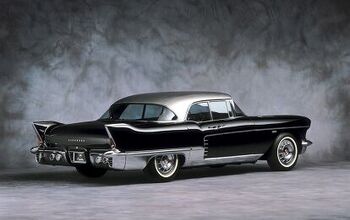

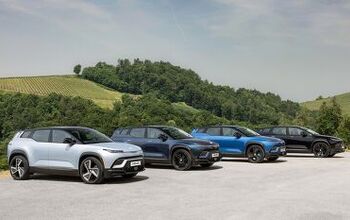

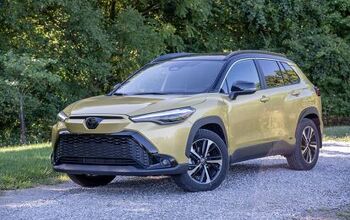





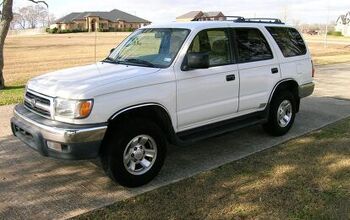
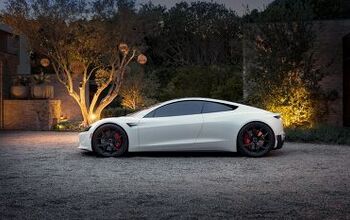
Comments
Join the conversation
My current ride is 16 years old, I bought it 3 years ago to replace the 22 year old car I bought new. I’d still be driving that car if some dingbat hadn’t run into it while it was parked in front of my house. The 16 year old car is worth more now than it was when I bought it. Thanks Joe! I also have a 22 year old truck I bought 19 years ago, and the newest car in the fleet is 8, bought it 5 years ago coming off a lease. I think it’s safe to say I’m helping push the average up.
Move over Cuba!